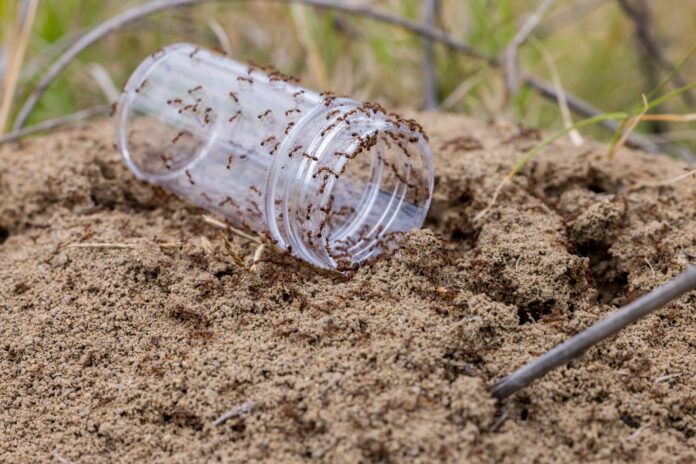The fire ant threat appears to be growing on the Sunshine Coast, with fresh detections in a master-planned community.
The National Fire Ant Eradication Program issued a media release on Wednesday, stating that a landscaper discovered and reported a suspect fire ant nest at Baringa on Saturday.
Eradication officers visited the site and destroyed the nests using direct nest injection on Monday, and the program’s scientists confirmed the report to be fire ants late Tuesday.
Eradication activities, including intensive treatment and surveillance, were set to be held up to 500m from the detection site.
The latest sighting is just one of several within Aura, a rapidly-growing master-planned community that is home to more than 10,000 residents. Nests have previously been found at Nirimba and Banya.
Nests have also been sighted in other areas of the Sunshine Coast during the past year, including at Forest Glen, Palmview, Yandina and Currimundi.

There are efforts to find out what led to the latest sighting in Baringa.
“Compliance checks and tracing of materials that can carry fire ants brought into the infested site and surrounding areas will help determine the source of the ants,” the NFAEP stated.
“Fire ants can travel in materials such as soil, hay, mulch, manure, quarry materials, turf, and potted plants. Human-assisted movement is the biggest risk to their spread”.
Want more free local news? Follow Sunshine Coast News on Facebook, LinkedIn and Instagram, and sign up for our FREE daily news email.
A spokesperson for the developer of Aura said the group was doing what it could to help authorities.
“Stockland continues to work closely with the Queensland Government and its National Fire Ant Eradication Program department throughout the process,” they said.
The sightings on the Sunshine Coast have been considered outlier detections.
“Fire ant detections outside the program’s containment boundary (around greater Brisbane) do happen from time to time, and the program has procedures in place to manage them,” the NFAEP stated.
Biosecurity zones have been established around several of the outlier detections, meaning that anyone who deals with materials that can carry fire ants, sourced from inside the zones, must employ fire ant-safe practices when moving or disposing of organic materials.
The NFAEP urged locals to help curb the threat of fire ants.
“Eradicating fire ants requires a whole-of-community approach.
“We need everyone to: look for and report fire ants; allow our teams property access to conduct eradication activities (and) take steps to prevent the spread of this invasive pest.”
Visit fireants.org.au or call 132 ANT (13 22 68) for more information.





